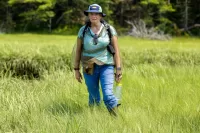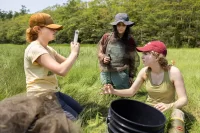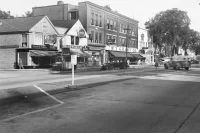
The 14 Bates students poured out of vans, stretched briefly, and got to work handing out plastic buckets, clipboards, work gloves, PVC pipe, and other odds and ends.
They had trekked from Lewiston to Sandy Point Beach in Yarmouth, Maine, in early May, not for a day at the shore but to help with an ongoing project to monitor an invasive crab species that’s blamed for a massive decline in New England’s soft-shell clam industry.
Most wearing soon-to-be-muddy boots, the students in the course “Biological Skills: Invasive Green Crab Inventory and Monitoring,” taught by Lecturer in Biology Jesse Minor ’02, were met at the beach by Jessie Batchelder, a fisheries project manager at Manomet, a nonprofit conservation organization that’s been monitoring the green crabs since 2018.
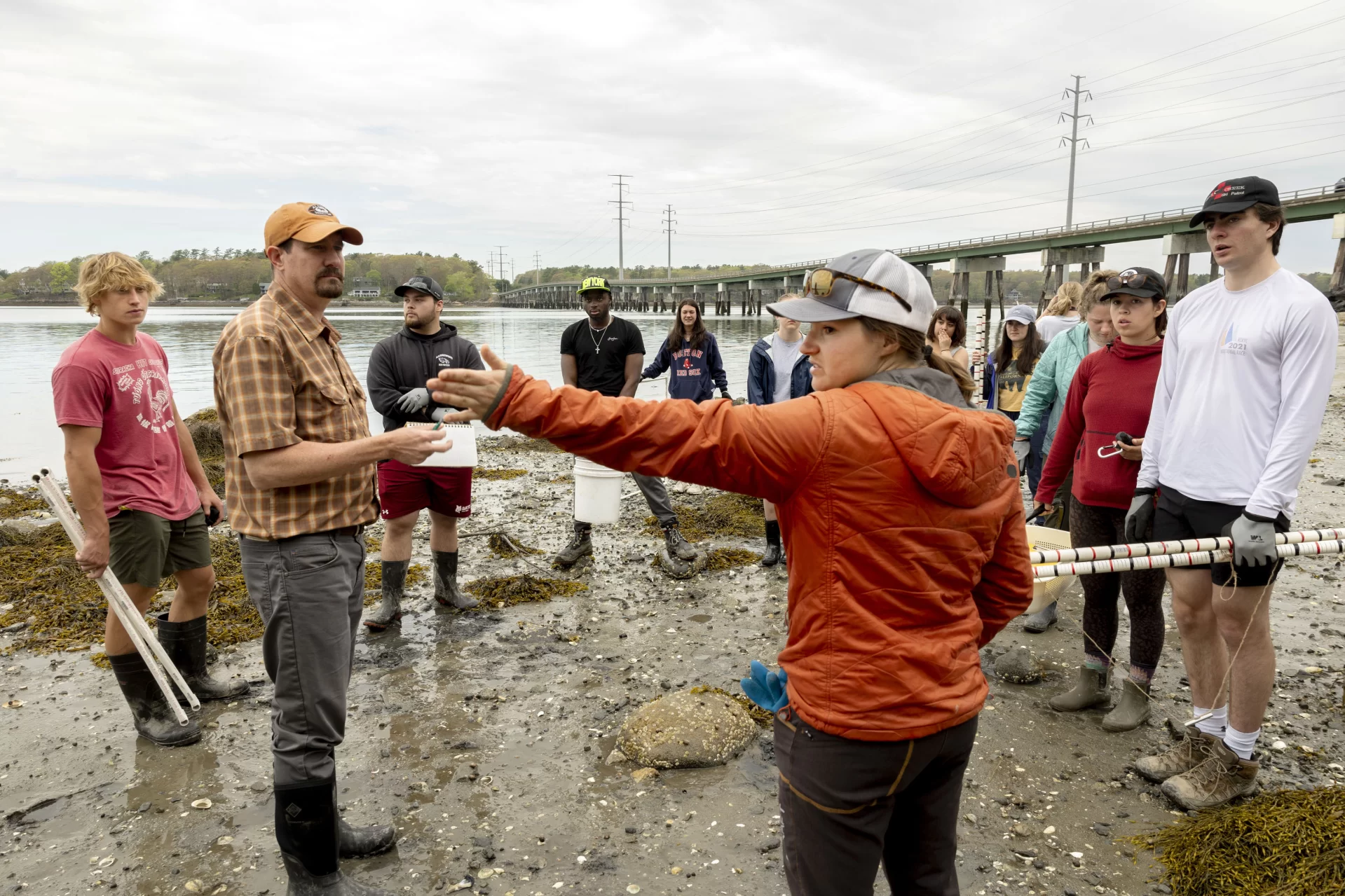
Manomet’s data-collection work requires a lot of helping hands, which is partly why the Bates crew joined the work. Another reason is suggested by the phrase “Biological Skills” in the course title.
In recent years, the biology department has designed several new Short Term courses to “give students specific, marketable training that they could highlight in applications for internships or jobs,” said Don Dearborn, a Bates professor of biology and associate dean of the faculty.
Skills taught this year included everything from PCR (a technique to amplify specific sections of DNA) and 16S microbiome sequencing, which identifies microbes in the human body, to tree and shrub identification and how to design a behavioral experiment.
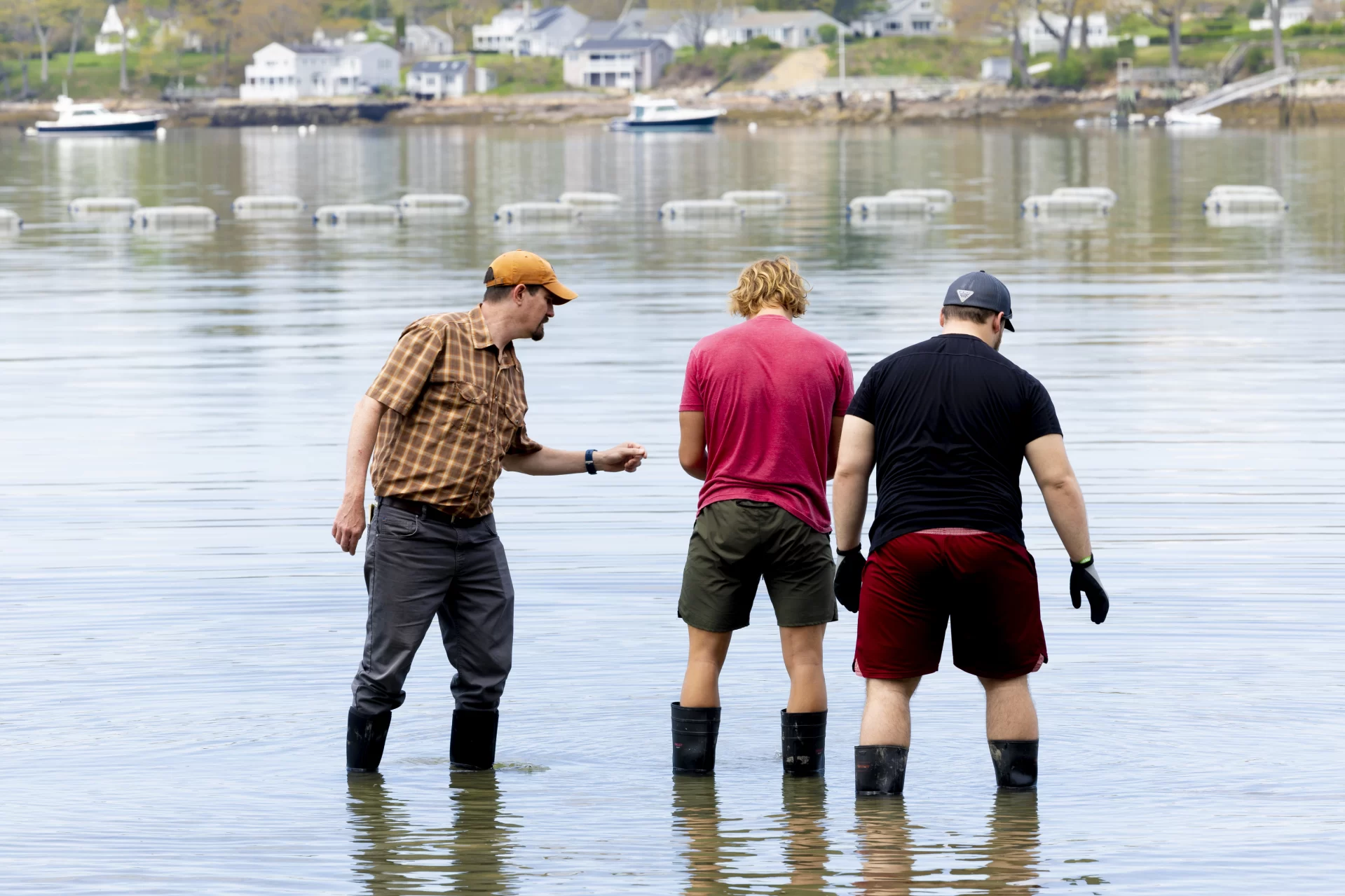
For his skills course, Minor assigned a variety of roles and tasks to each student, from photographer to gear caretaker. He switched the roles around for each field trip to ensure that skills training was passed all around, and to give the students a chance “to think and reflect about the science they are doing and also their role within the group.”
Minor’s speciality is in field-centered pedagogy, which he first experienced at Bates, learning geology field techniques from Dyk Eusden ‘80 and other geology professors. As a senior, Minor completed an honors thesis that involved extensive fieldwork in the Presidential Range.
His course extends the work that Minor did at the University of Maine while teaching an honors course focused on green crabs. “They represent a Maine-based environmental problem that provides an accessible and interesting topic for a skills-based Short Term,” he said.
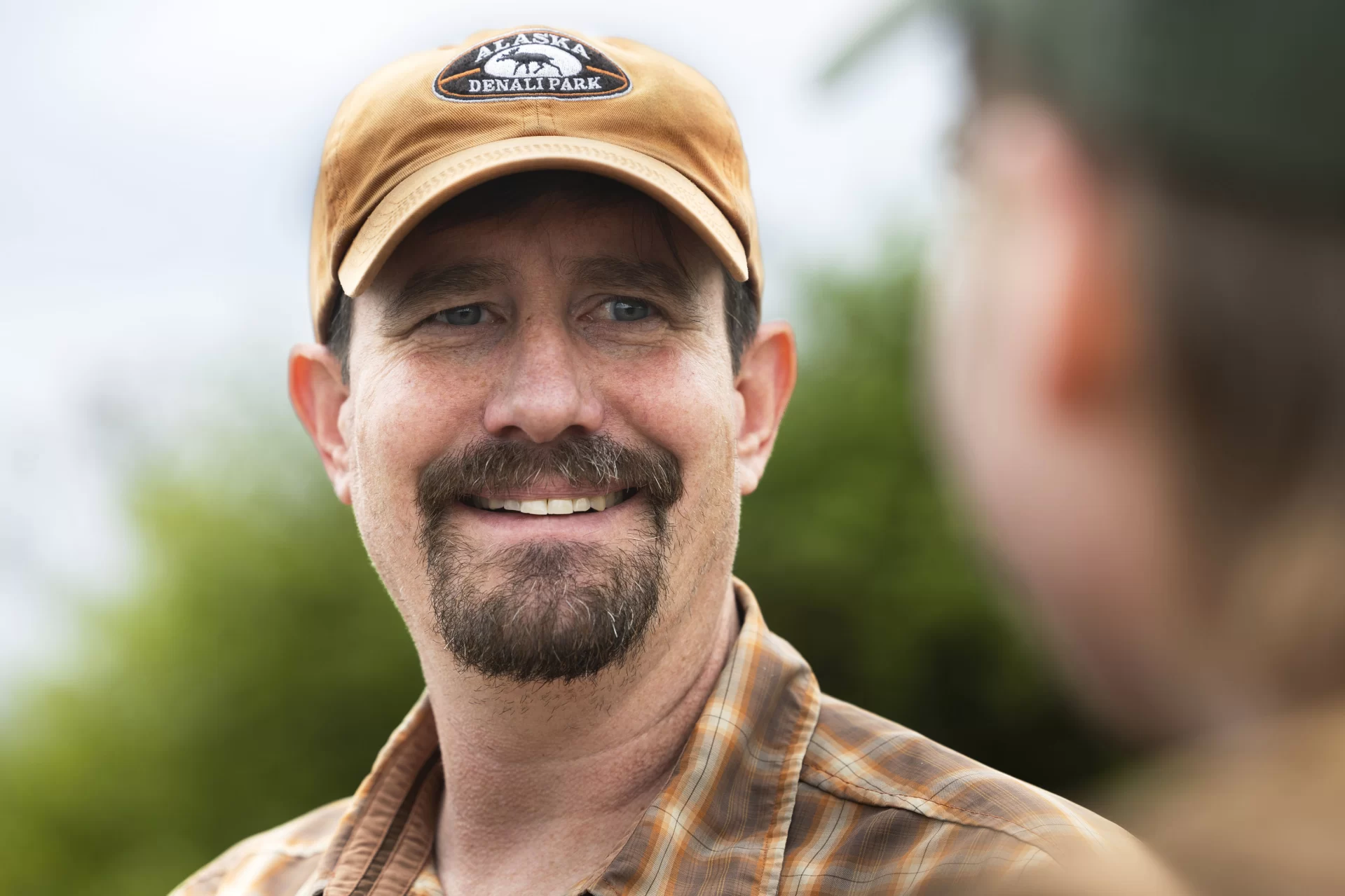
European green crabs are thought to have arrived on the East Coast in the 1800s, brought over in the ballast water of ships from Europe. In the past 50 years, the crab population along the New England coast has been steadily rising, coinciding with warming ocean waters.
“They’re voracious predators of shellfish,” said Batchelder, and they are here to stay. “There’s been a lot of efforts to trap and remove populations, and people trap thousands of pounds of crabs and it doesn’t make a dent on the population.”
With that in mind, current strategies focus on understanding the crab population, finding ways use the crabs — in food, as fishing bait, or as a flavoring in whiskey, something a New Hampshire distillery is trying — and on understanding “how to manage the resources that are impacted by the green crab populations,” said Elizabeth Schueler, president of Manomet.
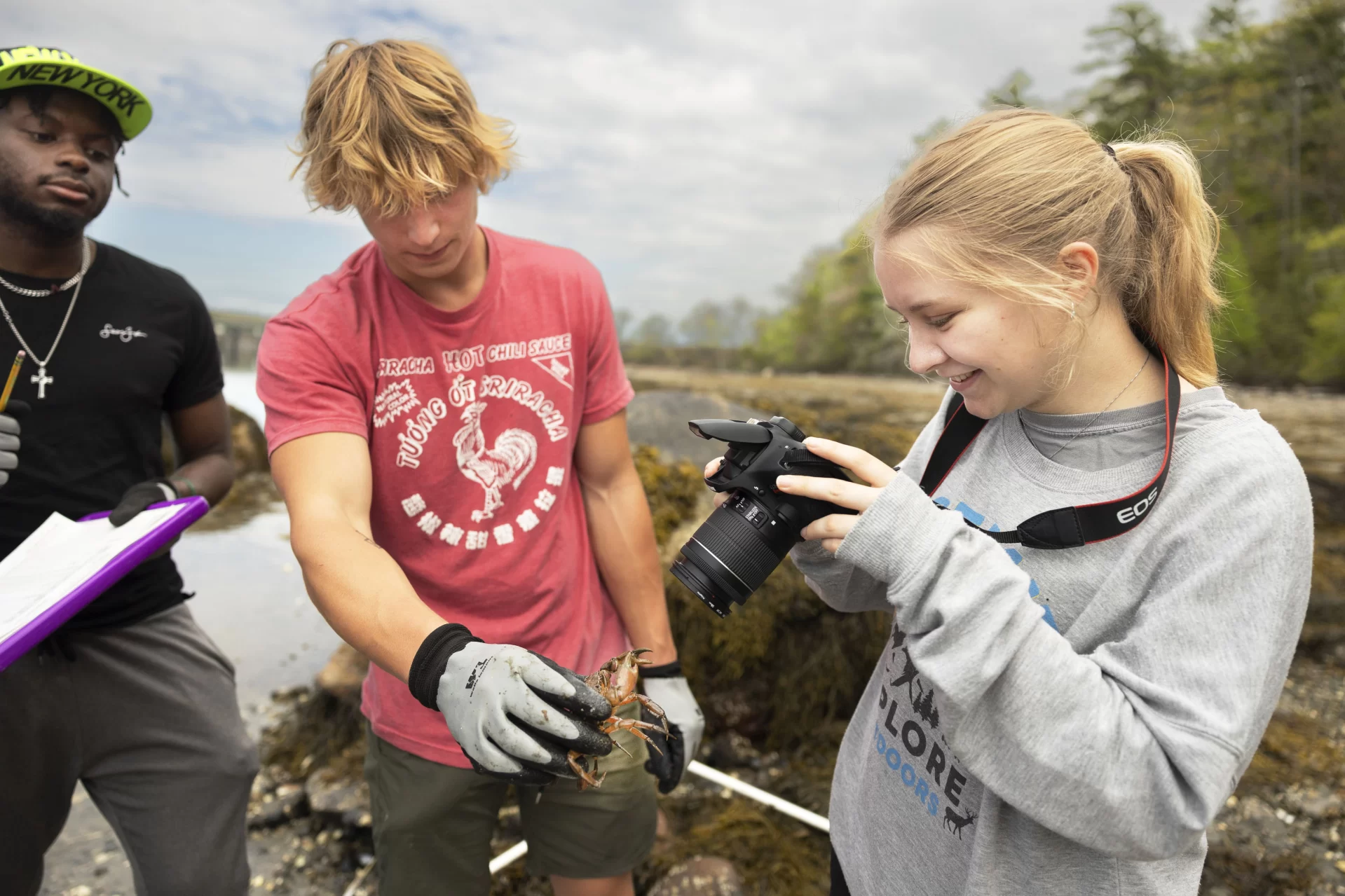
The crab information collected in Yarmouth will be added to Manomet’s comprehensive and ever-growing data set, one that will help researchers better understand the green crab population, including where the crabs find food, when they’re most active, and what other environmental factors affect them. “It’s great to have the data that the Bates students are collecting,” said Batchelder.
After the students geared up, they hiked down to the beach, under the bridge, and over to the rocky shoreline. The tide was falling — an ideal time to start collecting the data.
Katie Ney ’25 of Baltimore carried a camera to visually document the work. Sandy Point was the most navigable location that they monitored. Hermit Island in Phippsburg, and Five Islands and Robinhood Cove in Georgetown were more rocky and muddy. “This is the nicest one so far,” she said with a laugh.
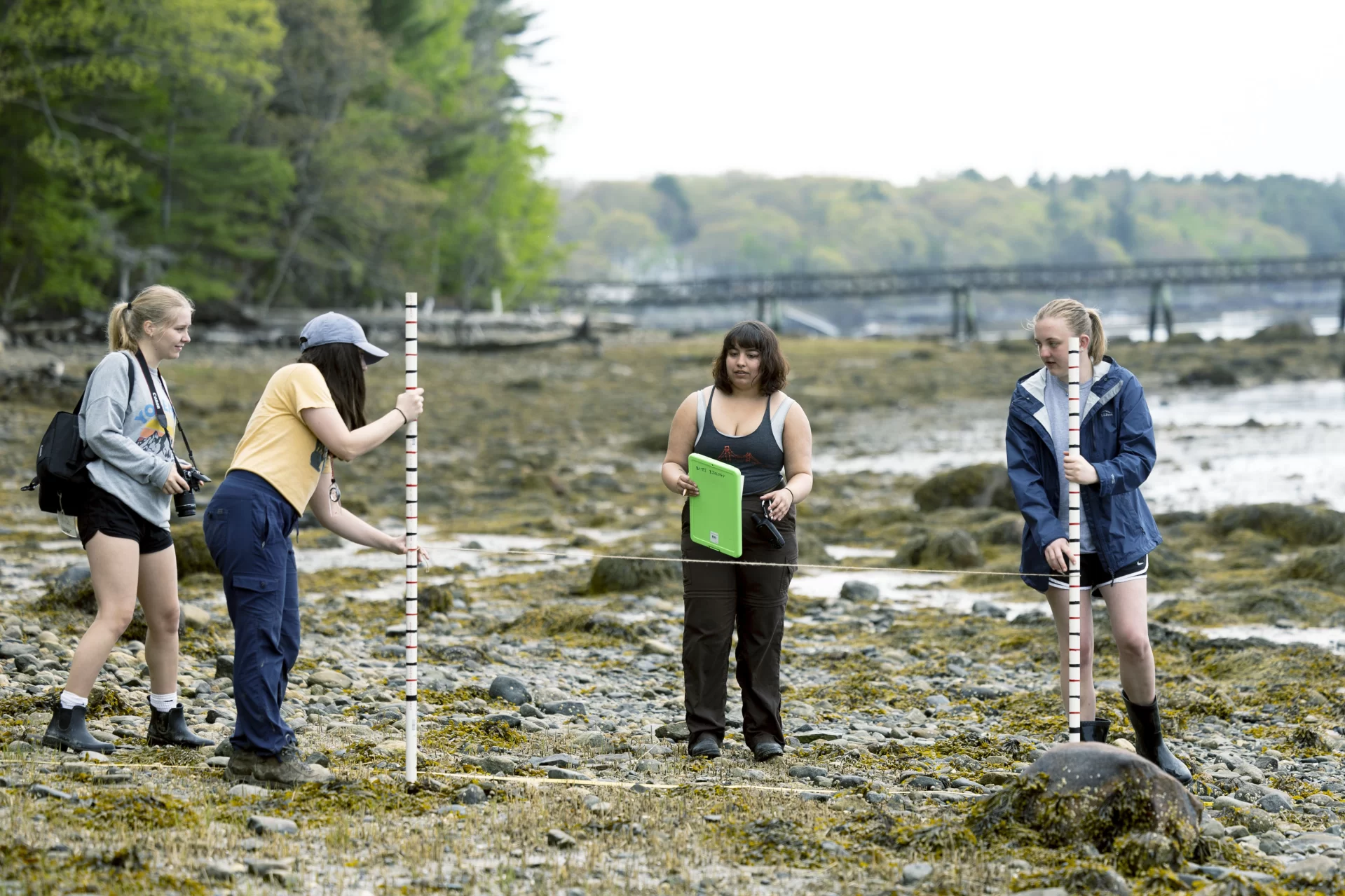
A few students got to work measuring the intertidal zone, stretching a tape all the way from the receding waterline into the brush at a point where the beach meets the hill. Minor took a few students to the other end of the beach, and Ney’s group began their data collection.
First, they set out a quadrat, a one-meter frame made out of PVC pipes meant to isolate an area for collecting data. After setting it up along the shoreline, they began looking for crabs.
“We also use [the quadrats] in our site assessment,” explained Lindley Friedman ’26 of Park City, Utah. “We’ll lay it down and we’ll kind of be like, ‘OK, what percentage of this area is mud, rock, or bedrock?’ and we use it to collect that data.”
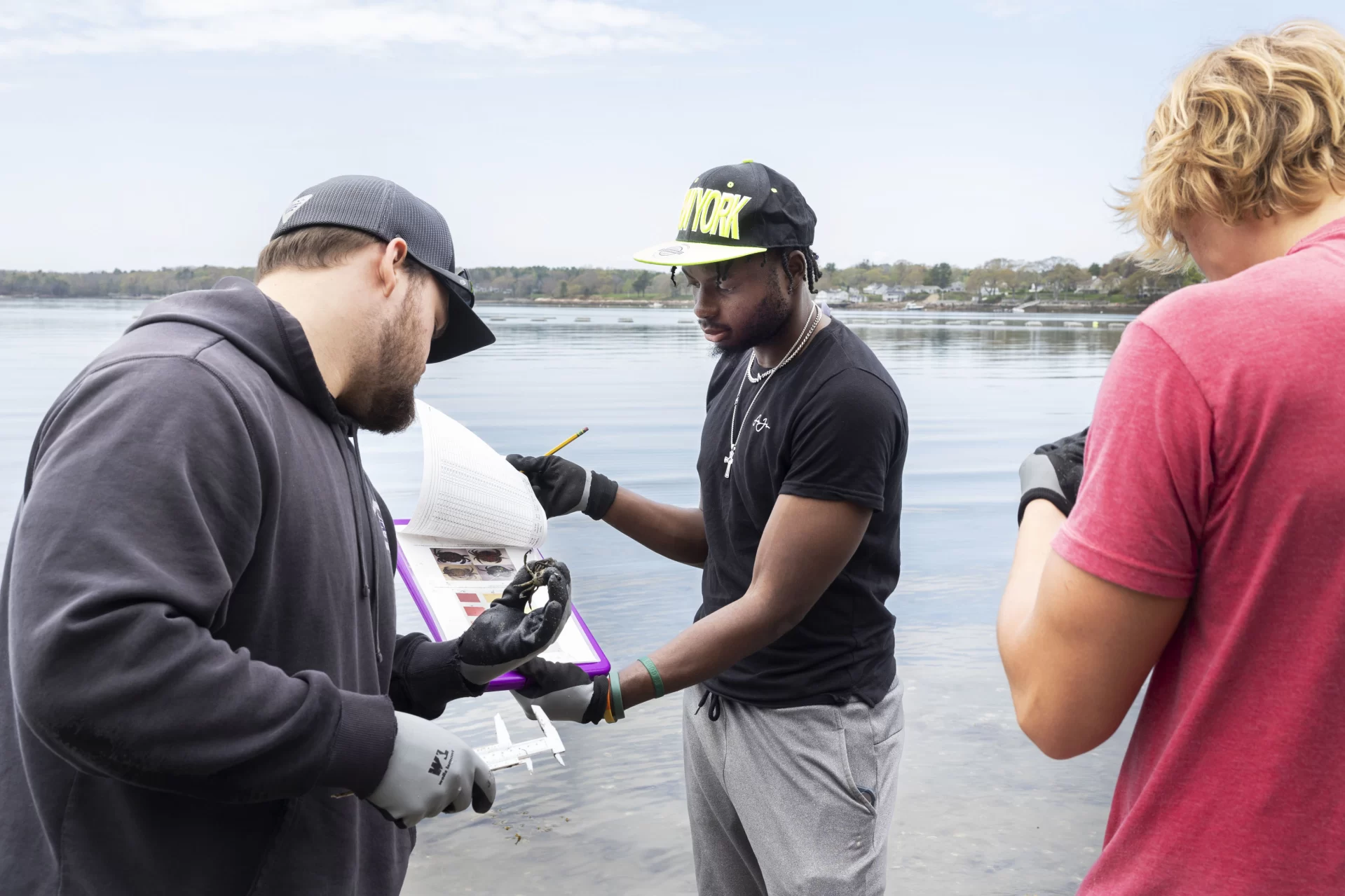
The group probed the area, lifting up rocks and swaths of half-dried seaweed in their search for the crabs. They found plenty of periwinkle snails clinging to the rocks, but crabs were small and scarce. Green crabs can grow up to four inches in width and are identified by the five small spines on either side of their eyes.
They carefully measured each tiny crab they found, dead or alive, with a caliper, marking down the size, the number of claws, and if it was a female, with a wide abdomen, or a male, with a more narrow abdomen. Even the liveliness of the live crabs was evaluated and recorded.
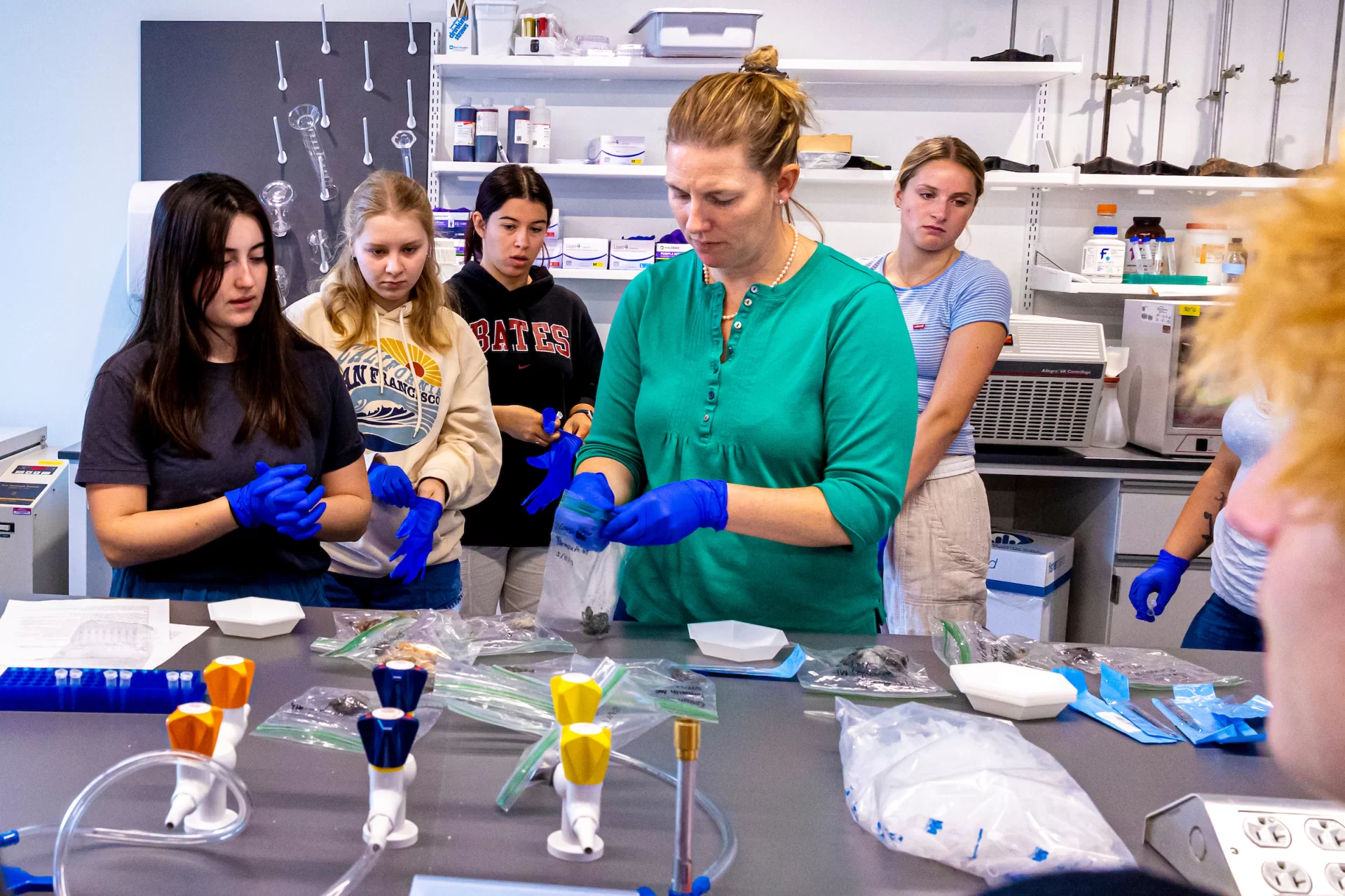
After collecting field data on the green crabs, the students selected a few to take back to campus. In a Bonney Science Center lab, guided by Associate Professor of Biology Larissa Williams, they learned another skill: DNA haplotyping, which they used to trace the crustaceans’ historical geographic origins back to the Mediterranean.
As Short Term drew to a close at the end of May, the Bates students created research posters and presented their findings to Manomet and the Bates community.
“And that’s one of the skills, too,” said Minor. “You learn how to tell the story of your work.”
